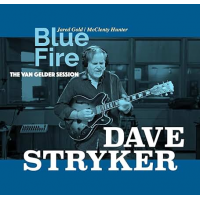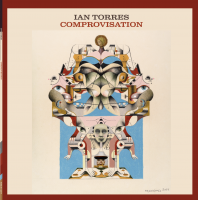Home » Jazz Articles » Multiple Reviews » Another Timbre Celebrates Its First Decade
Another Timbre Celebrates Its First Decade
In addition to its releases on disc, through online projects such as the Anonymous Zone and the Mobiles Project, Another Timbre has encouraged innovation and participation in music making. So essential has Another Timbre become to many music lovers that we must hope this decade has been the first of many...
 Jürg Frey
Jürg Frey Collection Gustave Roud
Another Timbre
2017
Music by the Wandelweiser group has figured prominently in Another Timbre's first decade. As well as 2012's monumental six-disc box set Wandelweiser und so weiter, the label's catalogue is peppered with albums featuring the likes of Antoine Beuger, Dante Boon, Johnny Chang, Axel Dorner, Michael Pisaro and Stefan Thut as players or composers. But at the head of that illustrious list stands Swiss clarinetist and composer Jürg Frey; Collection Gustave Roud joins three previous Another Timbre albums dedicated to Frey compositions, Grizzana and Circles and Landscapes, both from 2015, and Guitarist, Alone from 2016. Consider those alongside further releases on Editions Wandelweiser and on Erstwhile, and it is obvious that Frey is in a purple patch.
This album's music was inspired by the poetry of Frey's countryman Gustave Roud (1897-1976). Frey says he first encountered Roud's work over a decade ago and its effect on his music has been profound. Of the five compositions here, dating from 2007 through to 2016, only one, "Farblose Wolken, Glück, Wind" (=Colourless Clouds, Happiness, Wind), features words written by Roud. On that forty-eight minute track, soprano Regula Konrad sings the title poem in French, accompanied by Stephen Altoft on trumpet, Stefan Thut on cello and Lee Ferguson on percussion, their plaintive tones highlighting the drama of Roud's words. Konrad's voice is effectively another instrument as she draws out the poem, emphasising the sounds of the words over their literal meaning but never failing to convey their emotion.
Of the other four tracks, three are trios while the fourth---and longest---features Dante Boon alone at the piano. Across all of them, it is that word "emotion" which springs to mind repeatedly. As so often, Frey's music is spacious and proceeds at a stately pace, its sustained notes being punctuated by silences to allow time to savour and fully appreciate them. Without making direct reference to Roud's poems themselves, these instrumental pieces create moods that are totally compatible with track titles such as "Le présence, les silences" and "Ombre si fragile." Exquisitely beautiful and peaceful.
 Olivia Block
Olivia Block Olivia Block
Another Timbre
2017
Although this is her first appearance on the label, Olivia Block is definitely at home on Another Timbre. Having said that, whatever expectations listeners may have of Block, based on her past releases, the music here is likely to expand them. In particular, it is neither a purely electronic work nor a large ensemble of Chicago players improvising nor scored orchestral pieces. Instead, we get Block herself alone at a piano. The album sleeve is quite economic with information; the album title is simply Block's name; the music is untitled beyond its three sections—totalling just over thirty-five minutes—bearing Roman numerals. We are told that it was recorded in Chicago in February 2017, co-produced by Adam Sonderberg.
In interview, Block refers to the music here as a suite, adding that it leaves a lot of room for improvisation between the composed bits. She says that she thinks of the suite as somewhat modular and can switch sections around. As well as preparing the piano with objects inside, Block also employs a contact mike connected to a mini speaker and during the performance uses a micro-cassette recorder played back inside the piano. None of that is gratuitous gimmickry, but is all part of a well-crafted and thought-through composition that feels coherent and logical.
The three parts (movements?) contrast with one another but hang together as a whole that, due to the devices just described, occasionally displays a soundscape full enough to have been created by several players. At other times, Block is heard entirely alone at the keyboard, picking out dramatic single notes whose pure sound is mesmeric. Throughout, the music is fascinating and engaging, sure to attract listeners in and hold their attention. This album will appeal to existing Block aficionados and draw in many new ones.
 Insub Meta Orchestra
Insub Meta Orchestra 13 & 27
Another Timbre
2017
So, we move from a solo performance by a woman from Chicago onto a thirty-two-member ensemble from Switzerland... never let it be said that Another Timbre is parochial! Previous releases from Insub Meta Orchestra (IMO) have all been on the INSUB label, with the orchestra practically acting as that label's house band. Centred around INSUB's driving forces, Cyril Bondi and d'incise, thanks to that pair IMO has an impressive track record of producing music that avoids the "cocktail party effect" which can afflict some large ensembles. Bondi and d'incise have links with Another Timbre, including the organisation of the recording of Ryoko Akama's impressive 2017 album Places and Pages, which makes it unsurprising that this new IMO release is on the label.
Studio-recorded in Geneva in July 2016, 13 & 27 takes its title from the two Bondi-d'incise compositions that form the album, "13 unissons" and "27 times," extended pieces that run for just under twenty and thirty minutes respectively. For "13 unissons," the orchestra was split up into thirteen subgroups of two or three musicians each, playing just one note as a unison. Every group could play as much as they wanted but never more than three or four groups played together. The main idea was to create different structures and associations between the groups. For "27 times" each musician had to choose his or her 'most unique, personal sound' to play twenty-seven times. The orchestra was divided into four groups (percussions, strings, winds and electronics), playing at three moments. In each moment, the musicians had to play three times a sequence of three times, which is twenty-seven times altogether, but always the same sound. Those compositional structures succeeded in producing controlled, uncluttered music from the orchestra. Because they involve groups playing together, the two pieces have deep, rich soundscapes which make very satisfying listening. Another success for Bondi, d'incise and their IMO associates.
 John Cage
John Cage Winter Music
Another Timbre
2017
As with Wandelweiser, it is entirely fitting that this anniversary batch of releases features John Cage's music as it has cropped up regularly in the label's first decade and has clearly been an inspiration to many of its artists. The Cage composition Winter Music, written in 1957, consists of twenty unbound pages, which can be played by any number of pianists from one to twenty. Any number of pages can be used in a performance, and in any order. Each page contains notes, chords and clusters which are positioned in accordance with the imperfections in the paper on which Cage was working. For this performance, recorded in St. Paul's Hall, Huddersfield, in June 2014, four pianists were used, Mark Knoop, Catherine Laws, Philip Thomas and John Tilbury, an impressive line-up that is testament to the label's status. Chance procedures were used to assign each pianist five of the twenty pages. They agreed an overall duration of forty minutes and prepared their parts independent of one another. There was no rehearsal and the piece was played just once.
The insistent chords throughout the composition give it a structure and provide a sense of drama that is exploited to the full in this theatrical rendition. The lack of rehearsal gives it an edge of spontaneity and freshness. The pianists overlap with one another, making individual contributions practically indistinguishable; consequently, this is a collective triumph for the four players.
As a batch of releases, these four albums provide an opportunity to celebrate Another Timbre's characteristic strengths and to look forward to future successes.
Tracks and Personnel
Collection Gustave Roud
Tracks: Paysage pour Gustave Roud (2007 / 2008); Haut-Jorat (2009); La présence, les silences (2013-2016) ; Farblose Wolken, Glück, Wind (2009-2011); Ombre si fragile (2007 / 2008 / 2010).
Personnel: Jürg Frey: clarinet (1, 2); Stefan Thut: cello (1, 4, 5); Dante Boon: piano (1-3, 5); Andrew McIntosh: violin (2, 5); Regula Konrad: soprano (4); Stephen Altoft: trumpet (4); Lee Ferguson: percussion (4).
Olivia Block
Tracks: I ; II ; III.
Personnel: Olivia Block: piano and organ.
13 & 27
Tracks: 13 unissons (2016); 27 times (2016).
Personnel: Alexis Degrenier: hurdy-gurdy; Anna-Kaisa Meklin: viola da gamba; Angelika Sheridan: flutes; Antoine Läng: voice; Anouck Genthon: violin; Bertrand Gauguet: saxophone; Brice Catherin: cello; Bruno Crochet: laptop; Christophe Berthet: saxophone; Cyril Bondi: harmonium, bass drum; d'incise: laptop; Daniel Tyrell: acoustic guitar; Dorothea Schürch: voice, singing saw; Eric Ruffing: analogue synthesiser; Gerald Perera: electric double bass; Hans Koch: clarinet; Heike Fiedler: voice; Ivan Verda: electric guitar; Jamasp Jhabvala: violin; Luc Müller: floor-tom, melodica; Maxime Hänsenberger: bowl, harmonium; Raphaël Ortis: laptop; Regula Gerber: double bass; Rodolphe Loubatière: bowl, cymbal; Sébastien Branche: saxophone; Sandra Weiss: bassoon; Steve Buchanan: saxophone; Thierry Simonot: laptop; Violeta Motta: flutes; Vinz Vonlanthen: electric guitar; Wanda Obertova: voice; Yann Leguay: electronica.
Winter Music
Tracks: Winter Music (1957).
Personnel: Mark Knoop: piano; Catherine Laws: piano; Philip Thomas: piano; John Tilbury: piano.
Tags
PREVIOUS / NEXT
Support All About Jazz
 All About Jazz has been a pillar of jazz since 1995, championing it as an art form and, more importantly, supporting the musicians who make it. Our enduring commitment has made "AAJ" one of the most culturally important websites of its kind, read by hundreds of thousands of fans, musicians and industry figures every month.
All About Jazz has been a pillar of jazz since 1995, championing it as an art form and, more importantly, supporting the musicians who make it. Our enduring commitment has made "AAJ" one of the most culturally important websites of its kind, read by hundreds of thousands of fans, musicians and industry figures every month.

















